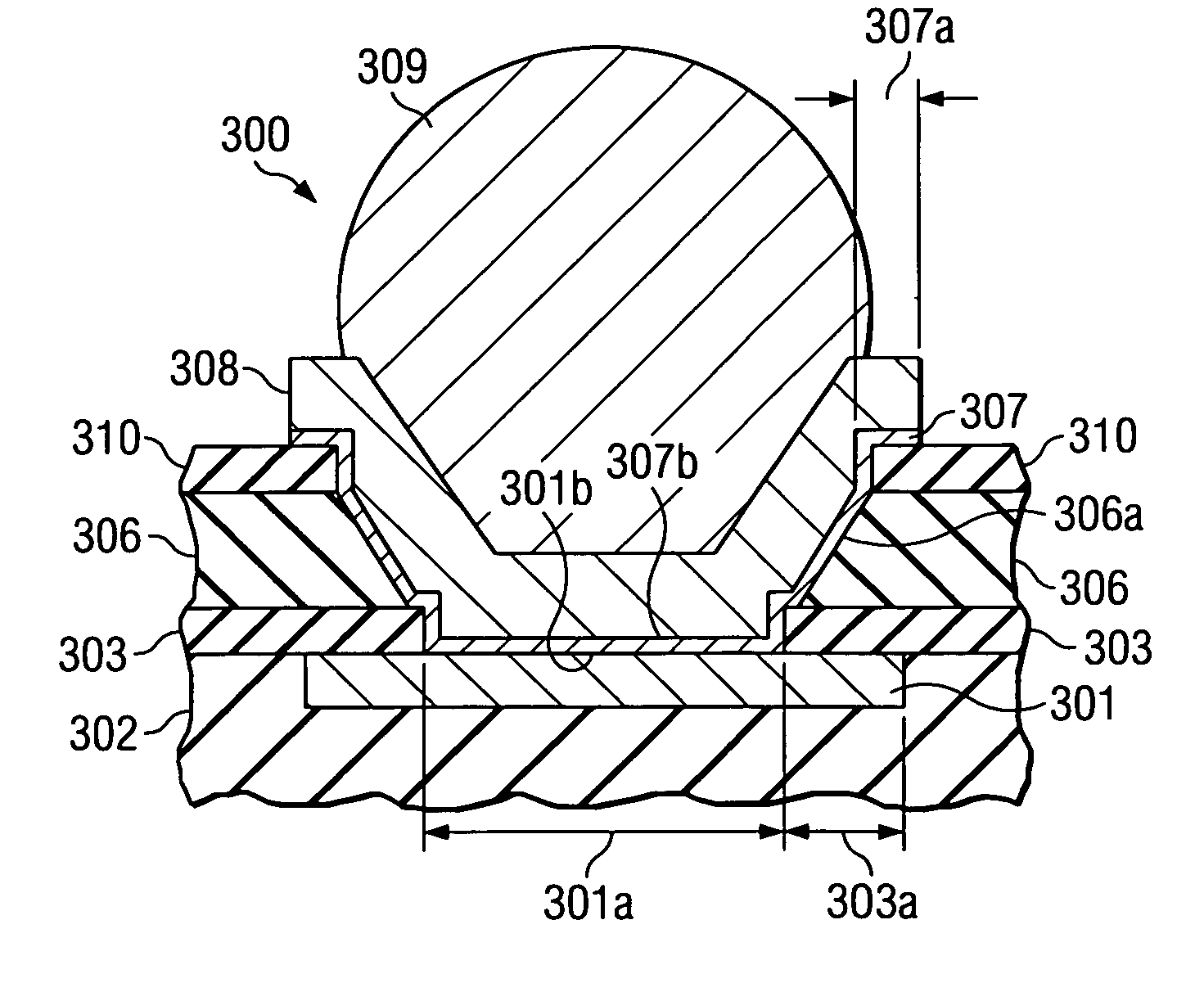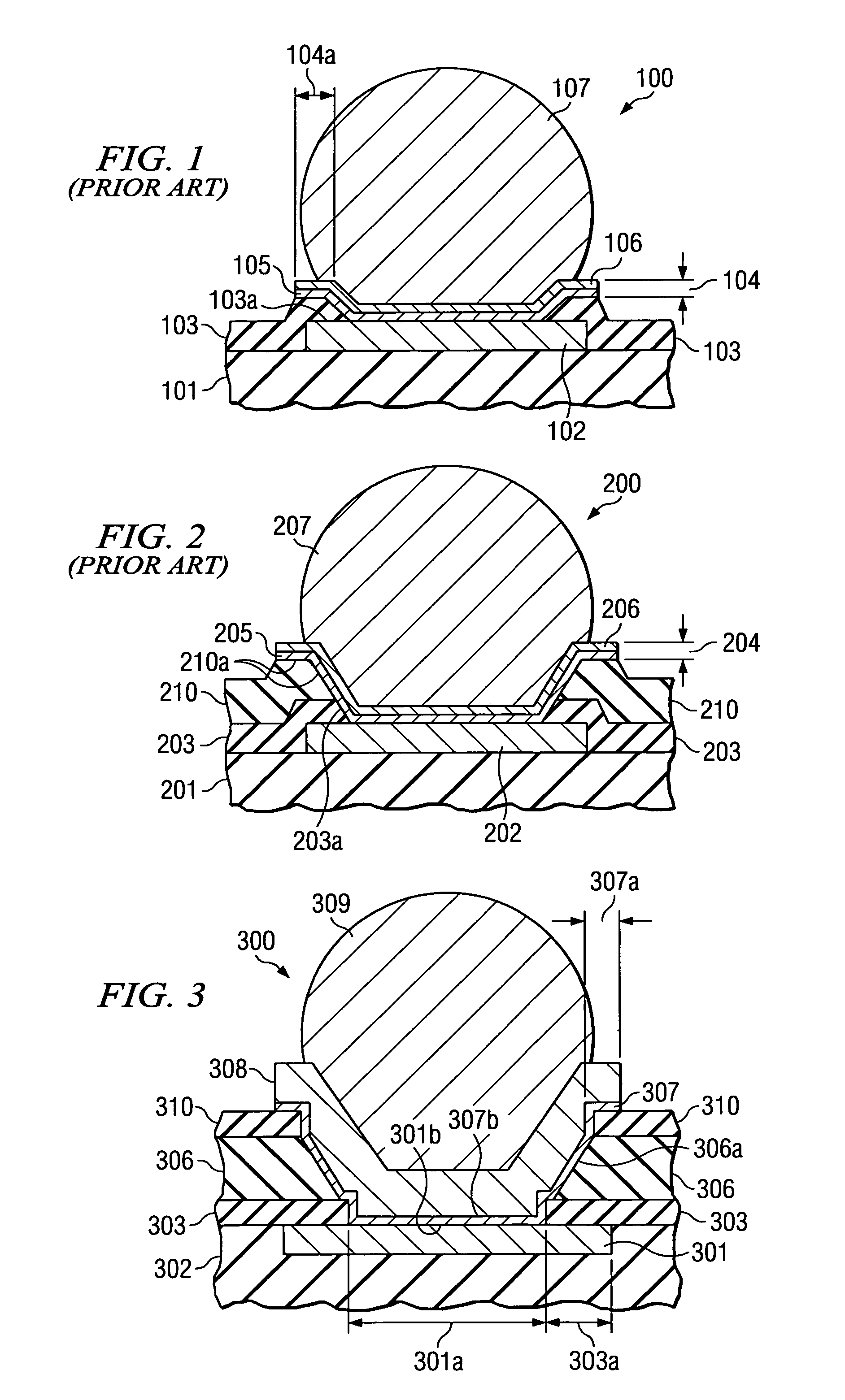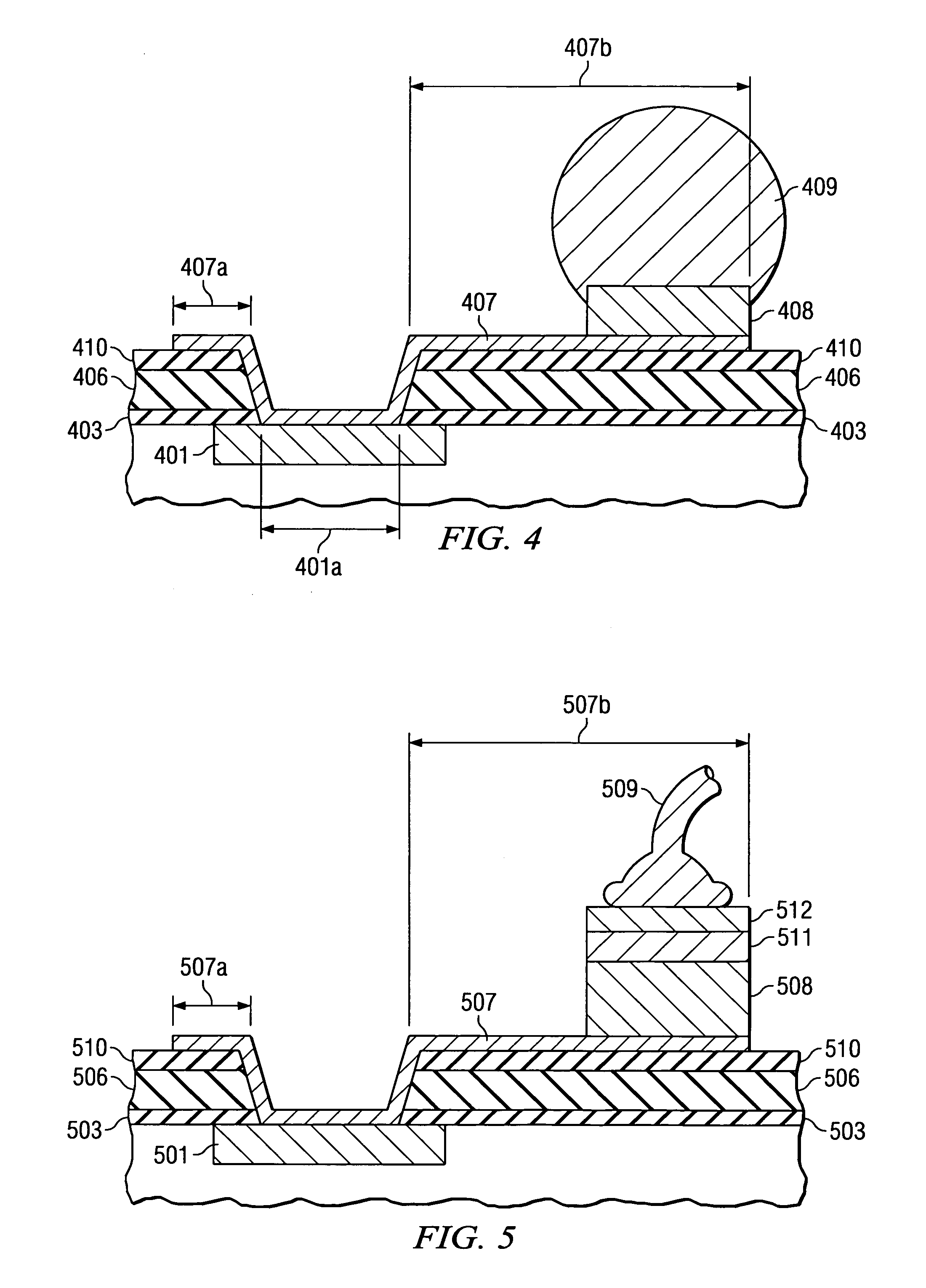Direct bumping on integrated circuit contacts enabled by metal-to-insulator adhesion
a technology of integrated circuit contacts and adhesion, which is applied in the direction of semiconductor devices, semiconductor/solid-state device details, electrical apparatus, etc., can solve the problems of brittleness, mechanical weakening of materials, and sensitivity to thermo-mechanical stress, so as to facilitate the rerouting of solder bumps, improve the adhesion of under-bump metal layers, and prevent stress-related damage to brittleness
- Summary
- Abstract
- Description
- Claims
- Application Information
AI Technical Summary
Benefits of technology
Problems solved by technology
Method used
Image
Examples
Embodiment Construction
[0020]The present invention is related to U.S. patent application Ser. No. 10 / 086,117, filed on Feb. 26, 2002 (Bojkov et al., “Waferlevel Method for Direct Bumping on Copper Pads in Integrated Circuits”).
[0021]The impact of the present invention can be most easily appreciated by highlighting the shortcomings of the known approaches to form contacts to integrated circuits (ICs). FIG. 1 illustrates schematically an example of the metallurgical requirements in known technology for a contact pad of a small portion of an IC chip generally designated 100. A semiconductor material 101, typically silicon, has patterned aluminum metallization 102 and is protected by a dielectric, moisture-impermeable protective overcoat 103, usually silicon nitride or oxynitride. A window has been opened in the overcoat 103 to expose metallization 102 and leave a protective perimeter 103a around metallization 102. An additional “under bump” metallization 104 has been deposited onto metallization 102 and patt...
PUM
| Property | Measurement | Unit |
|---|---|---|
| thickness | aaaaa | aaaaa |
| thickness | aaaaa | aaaaa |
| thick | aaaaa | aaaaa |
Abstract
Description
Claims
Application Information
 Login to View More
Login to View More - R&D
- Intellectual Property
- Life Sciences
- Materials
- Tech Scout
- Unparalleled Data Quality
- Higher Quality Content
- 60% Fewer Hallucinations
Browse by: Latest US Patents, China's latest patents, Technical Efficacy Thesaurus, Application Domain, Technology Topic, Popular Technical Reports.
© 2025 PatSnap. All rights reserved.Legal|Privacy policy|Modern Slavery Act Transparency Statement|Sitemap|About US| Contact US: help@patsnap.com



